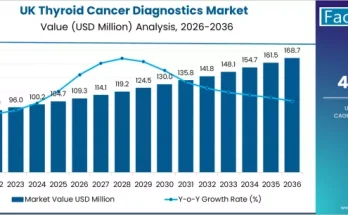In today’s healthcare landscape, precision is more than a buzzword—it’s a necessity. The patient positioning system market is rapidly transforming surgical, diagnostic, and therapeutic workflows, fueled by innovation, increasing surgical volumes, and a strong focus on patient safety.
Market Overview: Scope & Segment Highlights
Patient positioning systems include surgical and imaging tables, examination tables, and a wide range of accessories such as headrests, cushions, and pads. Among these, surgical tables dominate adoption, while radiolucent imaging tables are gaining prominence for their role in improving diagnostic accuracy.
Key application areas include:
- Surgery, particularly in orthopedics, neurosurgery, and oncology.
- Diagnostics and imaging, where precision alignment ensures higher quality results.
- Cancer therapy, where reproducible positioning is critical for radiotherapy.
Hospitals currently account for the largest share, but ambulatory surgical centers and diagnostic facilities are quickly expanding their role, supported by the shift toward outpatient procedures.
Market Dynamics: Drivers, Restraints & Opportunities
Growth Drivers
- Rising surgical volumes: Increasing prevalence of chronic diseases, trauma cases, and aging populations is driving higher demand for procedures, directly boosting system adoption.
- Technological advances: Integration of robotics, sensor-assisted controls, and imaging-compatible designs enhance both safety and efficiency.
- Oncology and radiotherapy demand: The need for precise and repeatable positioning is critical in cancer treatments, strengthening uptake.
Challenges
- High capital costs: Advanced positioning systems represent significant investments, making them less accessible for smaller facilities or developing regions.
- Training requirements: Complex systems demand specialized staff training, slowing implementation in some settings.
- Supply chain vulnerabilities: Disruptions in production and distribution can delay installations and upgrades.
- Regulatory hurdles: Stringent approval processes can extend launch timelines and affect adoption.
Opportunities
- Emerging markets: Rapid infrastructure growth in Asia-Pacific and Latin America offers new avenues for expansion.
- Smart positioning systems: The integration of AI, IoT, and ergonomic design is opening new possibilities for personalized and safer patient care.
- Rehabilitation and homecare: Beyond surgical environments, positioning solutions are increasingly relevant in post-operative care and long-term recovery.
- Collaborations: Partnerships between positioning system manufacturers and surgical navigation companies are creating bundled, high-value solutions.
Regional Landscape
- North America remains the largest market, driven by advanced healthcare infrastructure, higher procedure volumes, and rapid technology adoption.
- Europe follows closely, with aging populations and strong investments in high-quality healthcare technologies.
- Asia-Pacific is the fastest-growing region, fueled by medical tourism, rising healthcare spending, and rapid adoption of modern surgical technologies in countries such as China and India.
- Latin America and the Middle East & Africa are smaller but emerging regions where healthcare modernization is opening new opportunities.
Market Outlook: Growth Trajectory
The global patient positioning system market is estimated to be valued at over USD 1 billion today and is projected to nearly double in size within the next decade. Growth is expected at a CAGR between 5% and 6%, driven by demand for imaging-compatible systems, rising oncology treatments, and the increasing number of outpatient surgical procedures worldwide.
Specific regions such as China and India are expected to outpace global averages, with annual growth rates above 7% due to expanding infrastructure and rising awareness of advanced medical care.
Strategic Imperatives for Stakeholders
- Invest in innovation: Systems that combine AI, robotics, and imaging compatibility will define the competitive edge.
- Expand regionally: Tailor offerings to meet the needs of both cost-sensitive emerging markets and premium-focused advanced economies.
- Enhance training and usability: Providing education, service support, and easy-to-use interfaces will accelerate adoption.
- Collaborate for integration: Bundling patient positioning systems with navigation or imaging technologies creates strong value propositions for hospitals.
- Diversify applications: Exploring rehabilitation, homecare, and post-operative recovery environments can unlock new revenue streams.
Final Takeaways
The patient positioning system market is evolving from being a support tool to becoming a central driver of surgical precision, diagnostic accuracy, and overall patient safety. While challenges such as cost and complexity persist, opportunities in emerging markets, oncology care, and smart healthcare integration far outweigh the obstacles.
For medical device companies, healthcare providers, and investors, the message is clear: patient positioning is no longer just about comfort—it’s about outcomes, efficiency, and the future of surgical care.



